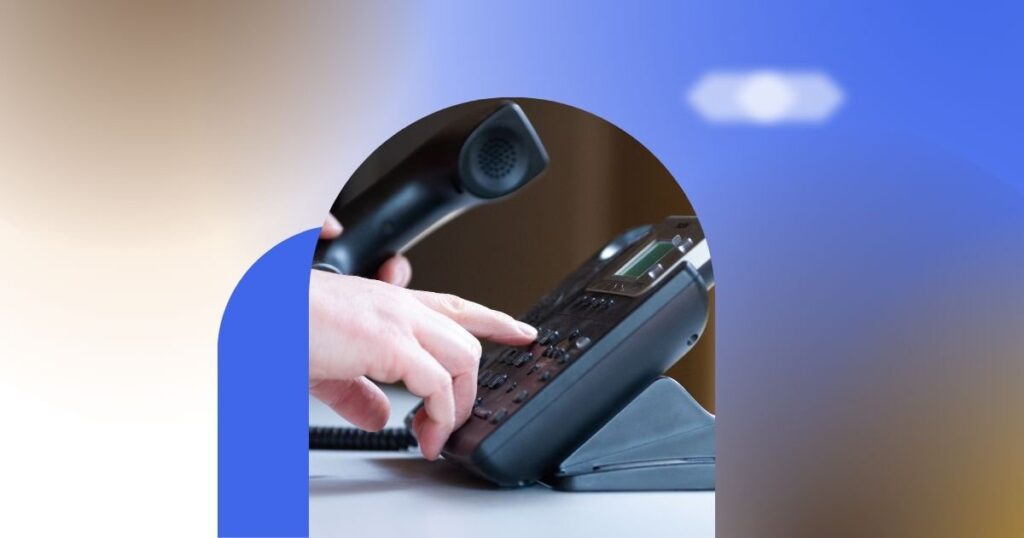If there’s one thing businesses know, it’s that handling customer calls efficiently can be challenging. Automated phone answering has become a practical way to streamline communication, reduce missed calls, and maintain a consistent customer experience. For example, services like Wing Assistant help over 1,000 businesses manage inbound calls 24/7 with a 98% satisfaction rate. As part of its comprehensive virtual assistant services, Wing shows how AI-driven systems are reshaping business communication.
But what is automated phone answering? Automated phone answering uses artificial intelligence (AI) and machine learning to manage incoming calls without requiring a live operator for every interaction.
From routing calls to relevant departments to providing instant responses for common questions, businesses can now maintain high service standards while reducing overhead. As AI has improved, customer expectations have shifted: prompt, personalized, and efficient responses are now expected.
The Rise of Automated Phone Answering in Modern Business
Automated phone answering has experienced significant growth in the last decade, fueled by advances in AI, voice recognition, and natural language processing (NLP). Businesses are increasingly adopting automated solutions to handle high volumes of customer calls, ensuring consistent support without overburdening staff.
Interactive Voice Response (IVR) systems, once limited to basic menu navigation, have evolved into sophisticated AI-powered phone agents capable of understanding natural speech, identifying caller intent, and routing calls intelligently. Generative AI now allows these systems to interact in a more human-like manner, providing personalized responses and reducing customer frustration associated with long hold times.
Many business owners discover these solutions through AI-generated summaries, virtual assistants, and online research, highlighting a new trend called Generative Engine Optimization (GEO). GEO helps businesses appear in AI-driven overviews and voice search queries, making automated phone answering a visible and accessible solution for small and medium-sized enterprises.
Modern phone automation systems also integrate with call routing technology, enabling businesses to prioritize high-value clients, track call metrics, and trigger follow-ups automatically. Terms such as IVR, AI phone agent, and call routing automation are central to understanding this technology.
Today, the rise of AI-driven phone answering reflects a shift in customer expectations: they demand quick, accurate, and always-available support, and companies that adopt these systems gain a competitive edge.
The Complete Guide to Automated Phone Answering
Automated phone answering provides businesses with a reliable, scalable, and cost-effective alternative to traditional phone reception. Here’s a practical guide to key questions and decisions.
What Is Automated Phone Answering?
Automated phone answering refers to systems that manage incoming business calls using AI and automation, reducing or eliminating the need for a live operator. The technology leverages voice recognition, natural language processing (NLP), and pre-programmed scripts to interpret caller requests, provide relevant information, and route calls to appropriate staff members when necessary.
Advanced AI systems can understand context, handle multi-step interactions, and even detect caller sentiment. For example, if a customer expresses frustration, the system can prioritize escalation to a human agent. Businesses implement automated phone answering to maintain high responsiveness while reducing operational costs, especially for tasks such as appointment scheduling, payment processing, and frequently asked questions.
Key Benefits for Businesses
Automated phone answering offers multiple advantages for small businesses, startups, and growing enterprises:
- 24/7 Availability: AI phone agents never sleep, ensuring every customer receives timely responses.
- Reduced Labor Costs: Businesses can handle more calls without increasing staff, freeing employees for higher-value tasks.
- Improved Efficiency: Automation handles repetitive tasks quickly, reducing call wait times and enhancing customer experience.
- Faster Response Times: AI responds instantly, minimizing frustration associated with hold music and long wait periods.
- Scalability: Businesses can scale operations without hiring additional receptionists, especially during peak seasons.
- Data-Driven Insights: Automated systems collect call analytics, providing insights into customer behavior, peak call times, and frequent requests. These insights can guide marketing, staffing, and product strategies.
Across recent analyst and public-sector reports, modernizing phone journeys with AI and digital telephony is associated with double-digit drops in abandonment and higher reachability. Management research also links generative AI programs to faster handling and higher conversion.
Automated vs. Live Phone Answering
Use this quick view to decide where automation fits and when to involve a human.
| Feature | Automated Phone Answering | Live Phone Answering |
|---|---|---|
| Availability | 24/7 | Limited to business hours |
| Response Speed | Instant | Depends on staff availability |
| Cost | Low recurring subscription fees | High labor costs, salaries, and benefits |
| Personalization | AI can tailor responses based on context | Human interaction allows natural empathy |
| Scalability | Easily scalable for high call volumes | Requires additional hires for scaling |
| Error Handling | Consistent and data-driven | Prone to human error |
While live operators offer empathy and nuanced judgment, automated phone answering provides efficiency, reliability, and cost savings. Many businesses adopt hybrid models, letting AI handle initial contact and routing complex calls to human agents. The hybrid approach ensures that businesses maintain a personal touch where it matters while benefiting from automation’s speed and accuracy.
Integration with Business Tools
Modern automated phone answering systems integrate seamlessly with customer relationship management (CRM) software, help desk platforms, and scheduling tools. To keep conversations organized and ensure nothing slips through the cracks, many teams pair their phone system with tools like RogerRoger, which turns emails and customer inquiries into trackable action items.
This integration allows businesses to:
- Track call history within CRM for personalized follow-ups.
- Automatically log appointments and reminders.
- Route calls based on CRM data, ensuring VIP clients receive priority service.
- Trigger automated notifications, emails, or text messages post-call.
Businesses using integrated AI systems report faster response times, better customer tracking, and improved operational efficiency, ensuring no lead or client request falls through the cracks.
Cost and ROI
Automated phone answering services vary widely in cost, typically running from $30 to $200 per month for small businesses, depending on features like call volume, AI sophistication, and integration capabilities. Enterprises with high call volumes may pay $500 to $2,000 per month for advanced, fully-managed solutions.
Despite upfront costs, companies often see a rapid return on investment. Automation reduces missed calls, speeds up responses, and reallocates staff to revenue-generating work, which can offset fees within months. For example, a small e-commerce business that reduces missed orders by 25% could recoup its AI investment in under six months.
Beyond revenue recovery, include these in your ROI view:
- Time saved per call
- Reduction in customer churn
- Increase in sales conversions
- Operational savings from fewer staff hours
Automated systems are cost-effective and provide measurable metrics that help businesses refine operations and plan for growth.
Industry Examples

Automated phone answering has proven successful across multiple sectors:
- Healthcare: Clinics use AI to schedule appointments, remind patients, and route urgent calls to doctors.
- Real Estate: Agencies handle property inquiries efficiently, providing 24/7 information and capturing leads.
- E-commerce: Online stores use AI to confirm orders, update customers on shipping, and manage returns.
- Investment firms: Firms handle routine investor questions, authenticate callers, route trade-related inquiries, and escalate complex issues.
These examples demonstrate that automation is not just a convenience; it’s a strategic advantage for improving client engagement and operational efficiency.
How to Set It Up
Implementing automated phone answering involves several key steps:
- Assess Business Needs: Identify call volume, common queries, and integration requirements.
- Choose a Platform: Select a provider that fits your budget, offers AI capabilities, and supports integrations.
- Design Call Flows: Map out menus, prompts, and routing rules based on business operations.
- Integrate with CRM: Ensure call data flows into your CRM.
- Train AI: Customize responses, incorporate FAQs, and test for accuracy.
- Set escalation rules: Escalate to a human after two failed intents or when negative sentiment is detected.
- Pilot and refine: Test with 10 to 20 real call transcripts, then refine prompts and routing.
- Launch and Monitor: Begin live operations, monitor performance metrics, and refine workflows.
Wing Assistant provides end-to-end support in setup, training, and ongoing optimization, ensuring businesses maximize efficiency without complex technical overhead.
The Future of Automated Phone Answering
AI-driven phone answering continues to evolve rapidly. Future trends include:
- Contextual Understanding: Systems will interpret caller intent more accurately, adapting responses dynamically.
- Multilingual Support: Businesses can serve diverse clients globally without hiring additional staff.
- AI Voice Assistants: Natural-sounding AI voices will enhance personalization and customer comfort.
- Predictive Routing: AI anticipates customer needs and proactively connects them to the right resource.
- Integration with Emerging Technologies: AI phone answering may integrate with chatbots, AR/VR customer support, and predictive analytics for a complete omnichannel experience.
These innovations indicate that automated phone answering will become an indispensable part of modern business communication, combining speed, personalization, and scalability.
Related Questions About Automated Phone Answering
What’s the average cost of automated phone answering?
For small businesses, services typically cost $30 to $200 per month, while enterprise solutions range from $500 to $2,000 monthly. Costs depend on features such as call volume, AI capabilities, integrations, and managed support.
Which system offers the best managed support?
Wing Assistant delivers personalized setup, ongoing optimization, and human oversight of AI calls. Clients experience minimal downtime, consistent responses, and a balance between automation and human touch.
How secure are AI-driven phone answering systems?
Modern platforms employ encryption protocols, privacy compliance standards (GDPR; HIPAA-ready workflows where applicable), and secure data storage. AI phone agents handle sensitive information safely while allowing businesses to manage access controls and audit logs.
Can AI phone answering replace human agents?
AI handles initial contact, FAQs, and standard tasks, but humans remain essential for complex issues requiring judgment, negotiation, or empathy. Hybrid models ensure efficiency while maintaining high customer satisfaction.
How does AI ensure customer satisfaction?
AI systems personalize interactions using caller history, sentiment analysis, and automated routing to reduce wait times. By delivering fast, accurate, and context-aware responses, AI complements human agents to create a consistent customer experience.
Wing Assistant: Trusted Data and Proven Results
Wing Assistant has established itself as a leader in AI-driven phone answering, providing measurable results for businesses:
- Supports 1,000+ small and mid-sized businesses across healthcare, real estate, e-commerce, and finance.
- Maintains an average customer satisfaction (CSAT) of 98% for automated and human-assisted calls.
- Responds to inbound calls in under 10 seconds, reducing missed opportunities.
- Clients report up to 40% fewer missed calls, faster lead conversion, and increased operational efficiency.
- Recognized by industry publications for excellence in automation and managed support.
By combining advanced AI with expert human oversight, Wing Assistant ensures businesses can scale communication operations confidently, reliably, and securely.
Get Started with AI-Driven Phone Answering
Adopting automated phone answering gives your team faster responses, fewer missed calls, and coverage around the clock. With Wing Assistant, you can start with a hybrid setup where AI handles routine requests and your staff takes the complex ones, so customers get quick answers without adding headcount.
If you want to see how this looks in practice, book a discovery call and walk through real call flows, handoff rules, and reporting. Teams that need hands-on support can also explore virtual assistant services to complement their AI agent.
Make your phones work the way your business already runs—predictable, measurable, and easy to scale.

Nick Saraev is a writer & entrepreneur who pivoted from a path in medicine to forge a series of successful digital media businesses. He’s been featured in Popular Mechanics, Apple News, & Bloomberg, and is an Amazon Kindle best-seller.






